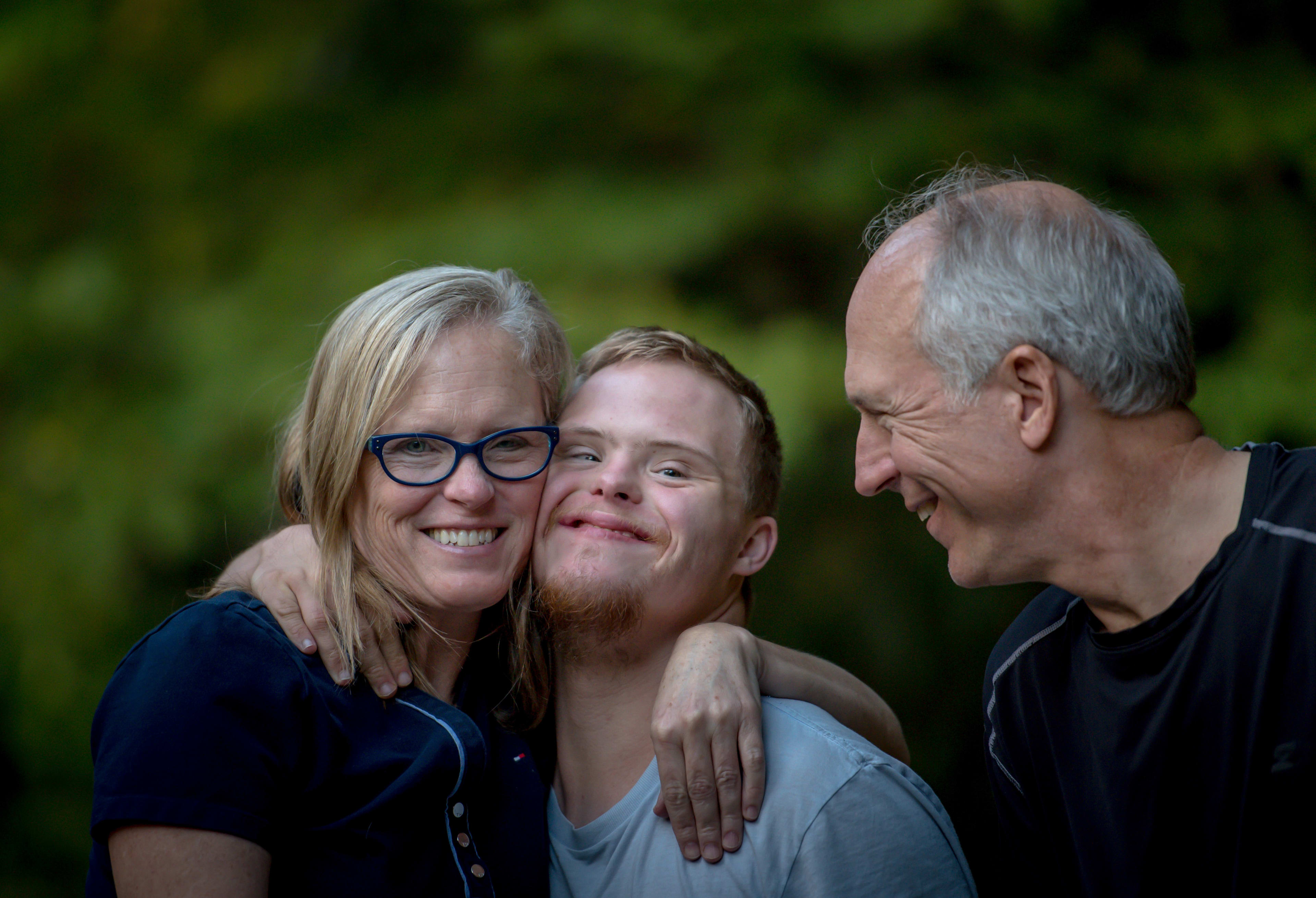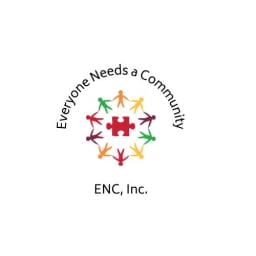
Adults with autism need society to understand what autism is for each individual. The education system, in much of the US, has gained a great deal of expertise in meeting individual needs and reliably creating a environment for individuals to be successful. Unfortunately after high school there is a cliff rather than a bridge to more productive opportunities.
Our older adults in America are very often isolated by circumstances of where they live and how their lives have changed. Children have grown up and moved away. The social activities that the children obligated them to attend are gone so many have no social contact for weeks. Isolation leads to boredom, loneliness and depression. Loneliness has been shown to be as hard on health as 15 cigarettes a day.
The Pandemic has taught us how all of us NEED social engagement. It is not a luxury it is a need and each person needs social engagement differently. The model for aging in America right now is to stay in one’s home as long as possible, move to assisted living if it is feasible, and ultimately to a nursing home as independence deteriorates.
The people who live the longest active lives on the planet are engaged in family and community and are needed members of the community. In assisted living and nursing home models our older Americans often feel meaningless and crave a more meaningful life.
What if we could create a multigenerational community that understands autism and cultivates volunteer activities that support one another? What if we could create a pedestrian community where one could walk down to the community center to meet for coffee and conversation? What if we had close working relationships with property management, social services and our coordinating staff? We could create successful long-term places to live for families, older Americans and autistic people in a vibrant connected community.
It has been estimated before the pandemic that up to 40 % of homeless people had intellectual or developmental disabilities. We don’t really know what percentage have autism, but I can tell you a story about a young man near me.
Tim, not his real name, was 28 years old, with a job and living in his own apartment for three years in a complex for people with disabilities when he was arrested for cutting the cords on the vacuum cleaners for the second time. For those of us who live with loved ones who are autistic we ask, “Why did it happen a second time?” Autistic people have a variety of sensory hypersensitivities that may be sounds, sights, tastes, smells, and touch, basically any sensation that can be felt. The manager could have told Tim when he was going to vacuum so that Tim could put on a headset, or the manager could have vacuumed when Tim was not home. Likely the vacuum sound was torture for Tim.
Instead of working out a solution Tim was arrested and could have ended up in jail. Fortunately Tim’s parents were still in the picture, and just as fortunate, the judge recognized that Tim was not competent and as such had not committed a crime. Unfortunately, Tim was evicted from his housing, and would have been homeless except that his parents found him a place to live.
Many people with autism will never be able to self-advocate. This is an inherent part of autism. Navigating the social world is confusing at best and one of the biggest challenges for autistics to navigate the social world of the neurotypicals.
My autistic son has taught me a lot about how different autism perception of the world is from mine. I like to say that living with him “Everyday is Opposite Day.”
What do we mean by opposite?
An autistic person may run back into a burning building after being rescued, seeking their place of comfort. Unfortunately people have died, both the autistic person and would be rescuer when this has happened. The person with autism may seek comfort when stressed and want to return to a bedroom.
A person with autism is likely to be unable to look at you and listen at the same time. Most people assume if someone is not looking at them they are also not listening. This is not only untrue but can also lead to worse issues. Law enforcement is often trained that avoiding eye contact is a “guilty look.”
“Time out” may not be an effective strategy for discipline, as many autistic minds prefer isolation. The isolation with “Time out” is often exactly what the person with autism likes; it is quieter, much less confusing and overwhelming and can be a situation that they want to experience over and over.
Services are not enough for our older Americans, our autistic loved ones, or any of our isolated people. What is missing from our choices of assisted living and nursing homes? A meaningful life. People need opportunities to do meaningful things on their own terms.
We are interpreting an award-winning model, “Treehouse Community” in Easthampton, MA, that brought together older Americans with families adopting children who have experienced foster care. They have a high school graduation rate near 100% for those children with near 90% who go on for higher learning. The community is all about building long term relationships. The older Americans we met there voiced, "I never imagined I could have a life like this." The older Americans support one another, the kids, the parents and love what they are doing.
In the model they have a three-way cooperation between Treehouse staff, property management, and social services. They are able to match peoples’ needs to available services, leveraging what is available already. It is a neighborhood community that considers itself trauma informed and encourages 6 hours or more a week of volunteering in the community for seniors. This might be giving rides, teaching a skill like cooking, or taking a walk.
We have spoken to church groups, employee groups and clubs and the most common question is, “Why doesn’t this exist already?” This kind of community is not for everyone. Grouches need not apply. For people who want to build a new social life where they are needed it is a new choice.
Imagine a community where people appreciate one another, where we grow understanding of one another’s’ unique qualities. I imagine a community where my autistic son can greet everyone enthusiastically and the people get a charge out of it. I call him “My Tigger” for the way he bounds and bounces from person to person greeting them repeatedly with his big smile. He seems to understand that greeting people makes them happy so I imagine his repeated greetings as him multiplying the happiness he is spreading. Who wouldn’t want someone who is happy to see them?
We will be nurturing understanding of one another, not just the autistic individuals. We will be fostering volunteer activities of all kinds that can introduce people to one another and create teamwork in efforts desired by the community members. We see many of the needs and abilities that may dovetail, like our older folks needing house cleaning and a few of our autistic people who love to clean. We see working with local agencies and creating new opportunities to expose our special people to new activities but with agencies that know how to do it.
As a parent I worry about what will happen to my son when I can no longer advocate for him? Family is not enough. He needs a community. We need to grow advocacy both for our aging population and our adults with disabilities.
Autism is very challenging because each person is so different. The saying in the autism community is, “If you know a person with autism you know ONE person with autism.” In a neighborhood community it is our aim for people to know one another and look out for one another.
We are partnering with Wisconsin Housing Preservation Corporation (WHPC), a nonprofit developer to create the rental properties that will include a portion of affordable rental units and a community center. We would also like to have a home ownership option immediately adjacent to the rental community.
We aim to have an outreach activity that includes the general public and those with autism in the greater community who wish to engage.
We don't have a committed timeline yet, but an estimate is three years. We don't have a final budget yet but our estimate is $1,000,000 for our part of the capital fund and $500,000 for start up costs and staffing. The Treehouse model has a Community Facilitator, an education officer, coordinators for volunteers and outreach coordinators.
We believe our town is the right place for the first community like this. We have many retired teachers and healthcare personnel who have the passion for helping one another. A small town has its challenges in fundraising and we are grateful for the opportunity on Every.org. We believe that this community model will be replicated and will promote a better healthy aging option for our growing population of older Americans.
I imagine a community where people understand and value one another. I imagine a community where "My Tigger" can greet and spread happiness to all he meets there. One need only understand that he will not likely be a conversationalist but he has a great smile and enthusiasm that is contagious.
I imagine a community where my son and others like him are safe in the world when parents are gone.
Donors
James Carceo 1This donation is in memory of Del Doran from James Carceo
Vijaya Nirujogi Kathleen Meyer 4The needs for everyone to be needed and appreciated has been made especially clear during the pandemic. Our retirement age adults are a gold mine of experience many of whom are looking for new opportunities to do good in the world, and do ...
Carol Van haelst
